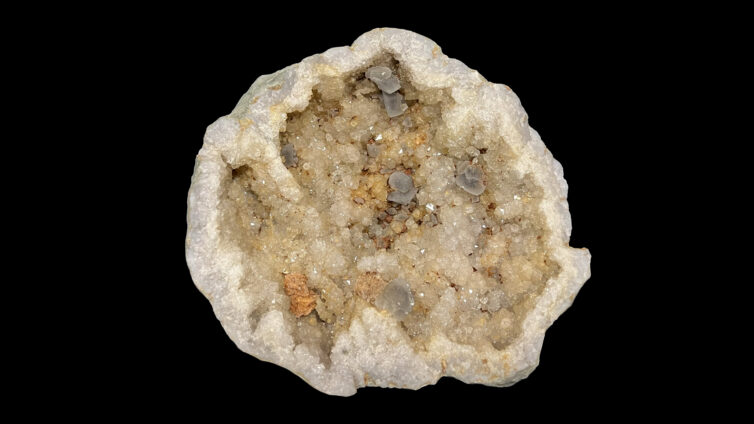
Geodes are spherical rocks that have a hollow cavity. The inside of this cavity becomes covered in different types of minerals, including quartz, calcite, agate, or even opal. These surprising insides in no way resemble the plain, rough outsides.
“Most geodes localities are in stratified volcanic deposits such as basalts and tuffs…” (King, n.d). When lava flows from a volcano, gas pockets can get trapped in that lava. As the lava hardens over time, these gas pockets transform into hollows of spectacular minerals. Geodes can also form in sedimentary rocks, such as limestone, when pieces of shells or other organic materials dissolve, leaving smaller pockets for minerals to form. These geodes are typically smaller than those created from volcanic activity.
Iowa, Oregon, and Minnesota are known for their rich geode deposits, but Kentucky, Utah, Wisconsin, Tennesse, and Arizona also have unique geodes.
Reflection question: Geodes look plain and boring on the outside but can contain wonders inside. Can you think of any other naturally occurring surprises?
Reference:
King, H. M. (n.d.). Geodes: The rocks with a crystal surprise inside! https://geology.com/articles/geodes/
